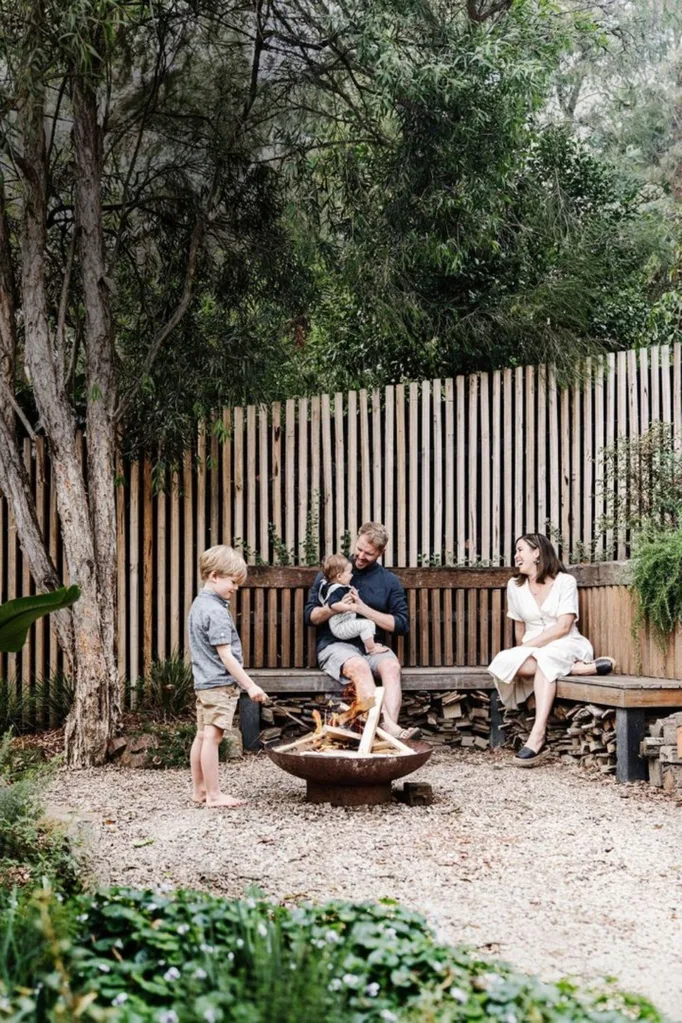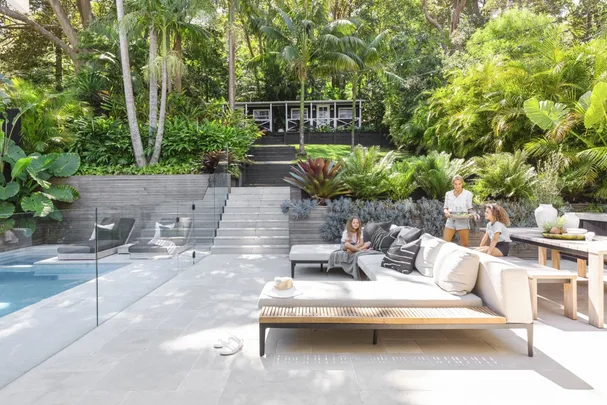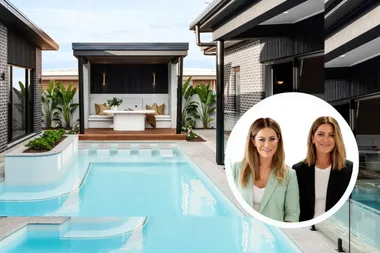The backyard is up there with sausage sizzles and Dame Edna on the list of top Australian icons, so it deserves just as much attention as your home’s interiors. Done right, a backyard, garden or courtyard can be your own little oasis away from the world, where you can unwind and entertain, play with the kids or get your nails dirty in the garden.
We’ve gathered some of the most inspiring backyard ideas from the archives to help inform your landscape design, as well as expert tips and advice on how to update your garden.

Grow an easy-care vertical garden in your backyard or courtyard
If space is at a premium, think “up”. Growing a vertical garden is a fabulous way to introduce more greenery to a small backyard. “Some great plants to use include English Ivy, Hoyas Sword Ferns, Begonias and Clematis,” says Karl Bitzer, spokesperson for outdoor living brand, Fiskars.
Keep in mind that some plant species, such as seasonal herbs, will die back and leave your green-wall hardware exposed, says Sam Collins of Vertikal, who creates vertical garden projects for commercial and luxury residential properties. Go for evergreen plant varieties.
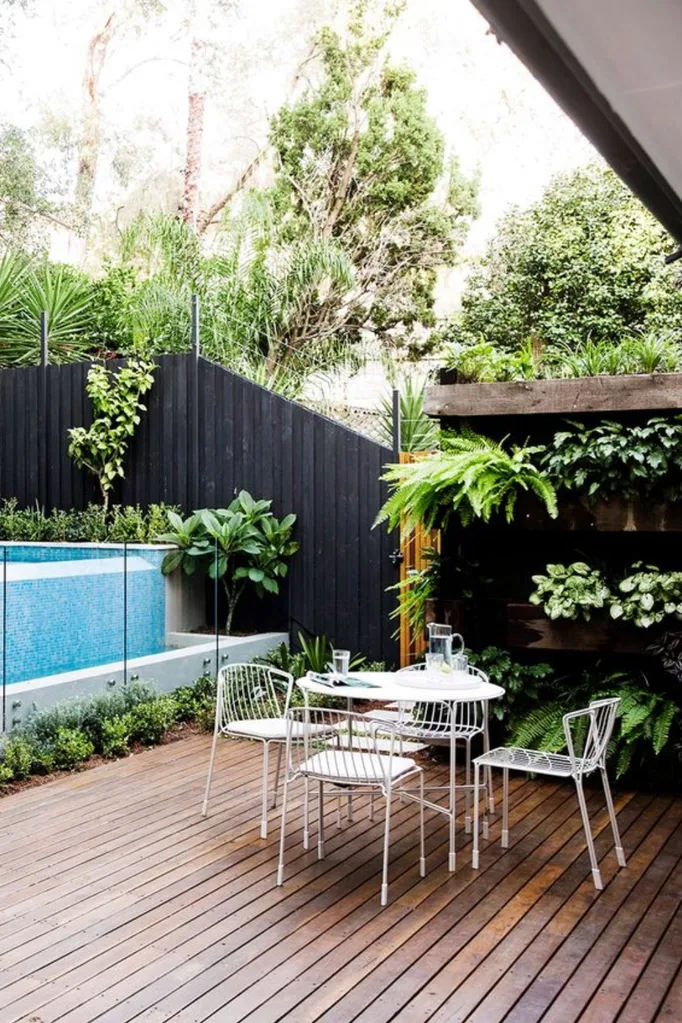

Just add water to your backyard design
Incorporating a water feature or, if you’re lucky, a pool into your landscape design can make you feel instantly serene — particularly if you’re not near the coast or a harbour. In fact, a large study by Glasgow Caledonian University found that living near ‘blue space’ (lakes, ponds, coastline, canals) can improve the mental health of people in urban environments.
But there’s no one size fits all when it comes to water features. Consider the style of your home and backyard. If you have a heritage house then an antique urn or terracotta pot would look lovely; in a contemporary home you could pull off a vertical fountain or a minimalist water table, for example.
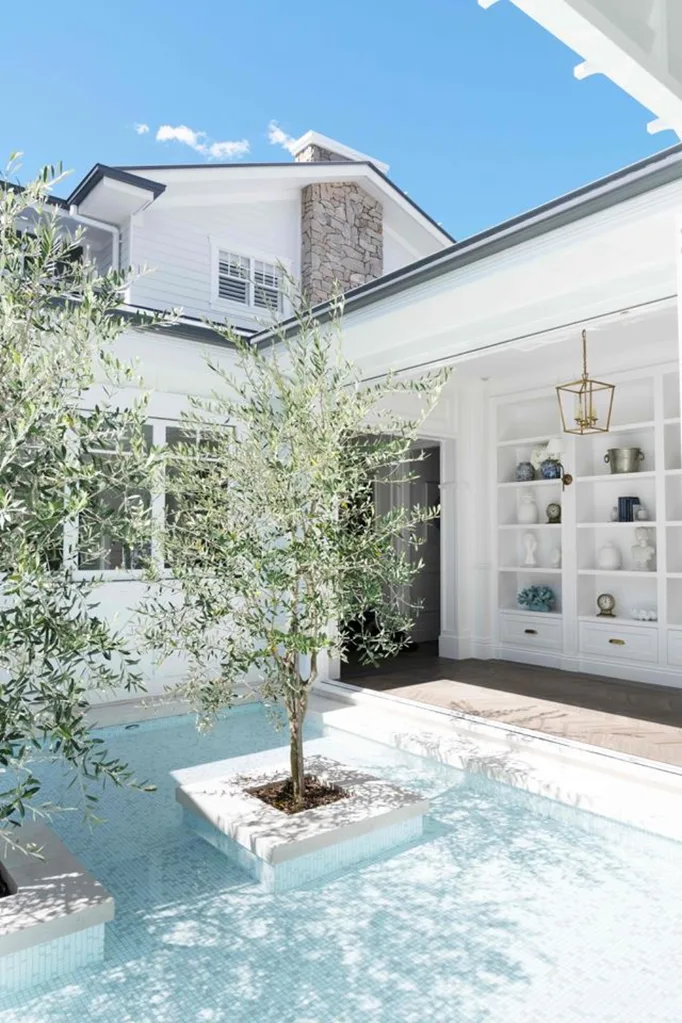
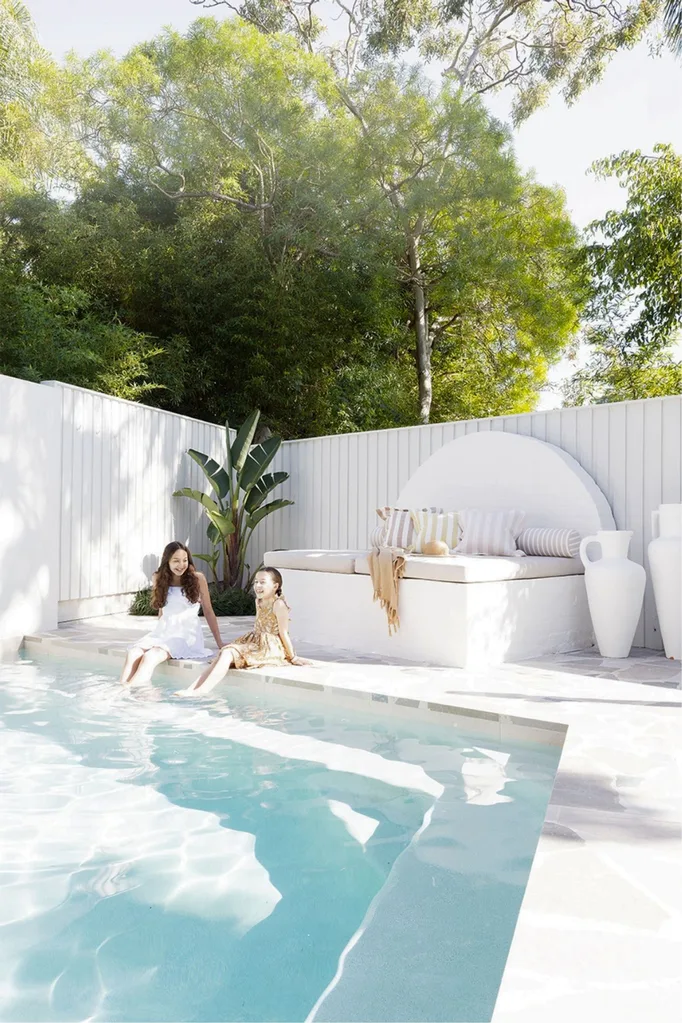
Plant the most hard-to-kill plants in your backyard or courtyard
Angling for an Insta-worthy garden but you’re not a green thumb? You’ll need to select hardy plants and trees that will tolerate shade, drought and general negligence (no offence). Karl Bitzer recommends these low-maintenance plants:
- Succulents: Because they store water in their leaves and stems, succulents don’t mind too much if you forget to water them.
- Westringia: This tough native hedge can tolerate drought, frost and humidity and being common to the coast can thrive on sandy soil.
- Lomandra Longifloia: Commonly known as basket grass, this native plant lives happily in almost any situation and doesn’t require much water.
- Lavender: Another easy, drought-resistant plant to add to your backyard garden, in a sunny spot. The purple flowers attract bees (a good thing).
- Callistemons: Otherwise known as bottlebrush, this flowering shrub can put up with both dry and moist conditions.
- Grevilleas: Choose from different species ranging from ground cover plants to shrubs to tall screening plants.

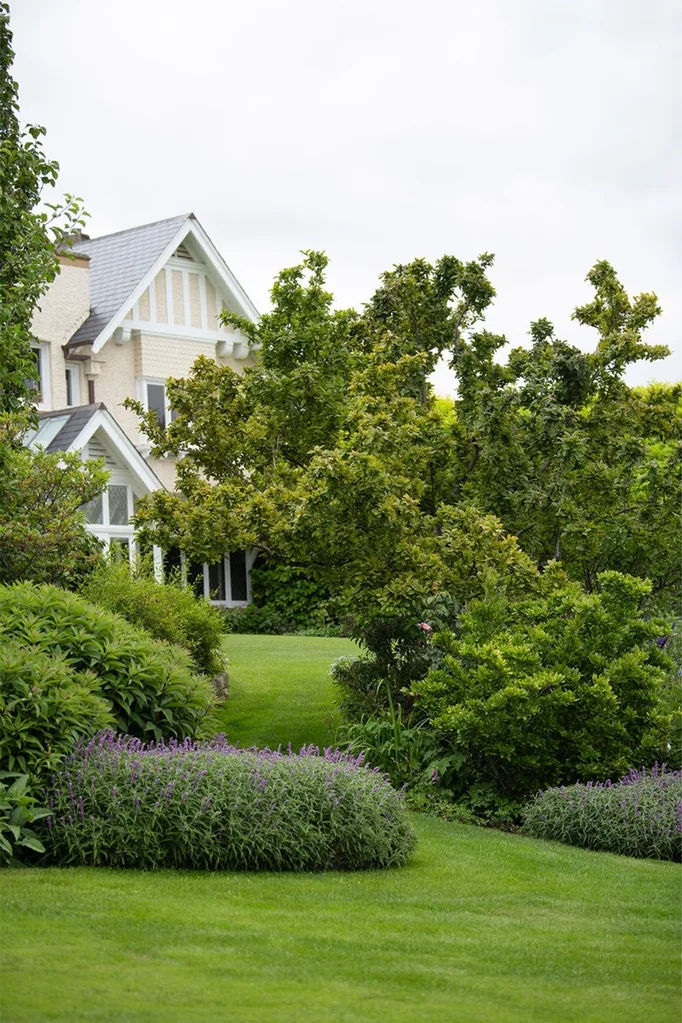
Family-friendly backyard ideas that make life more fun
The very idea of the Aussie backyard was conceived with families in mind. Even if you don’t have children, it’s worth planning your backyard design so that it accommodates kids. Should you ever put your home on the market, it’ll appeal to a bigger range of buyers. And if the epic 2022 season of The Block taught us anything, it’s that a backyard can be more than a just patch of grass. There’s an appetite for pizza ovens, fire pits, veggie gardens, basketball hoops, gazebos, cubby houses and more.
Consider how your family, or other families, might use the space. Can you hang a swing from a tree, or do you have the space to build a fully-fledged play fort? Will your kids enjoy picking herbs from a raised garden bed or taking veggie scraps out to a compost station? Maybe all you need is some lawn and a hammock. It might be worth dog-proofing the boundary, in case you or any future buyers bring home a fur baby.
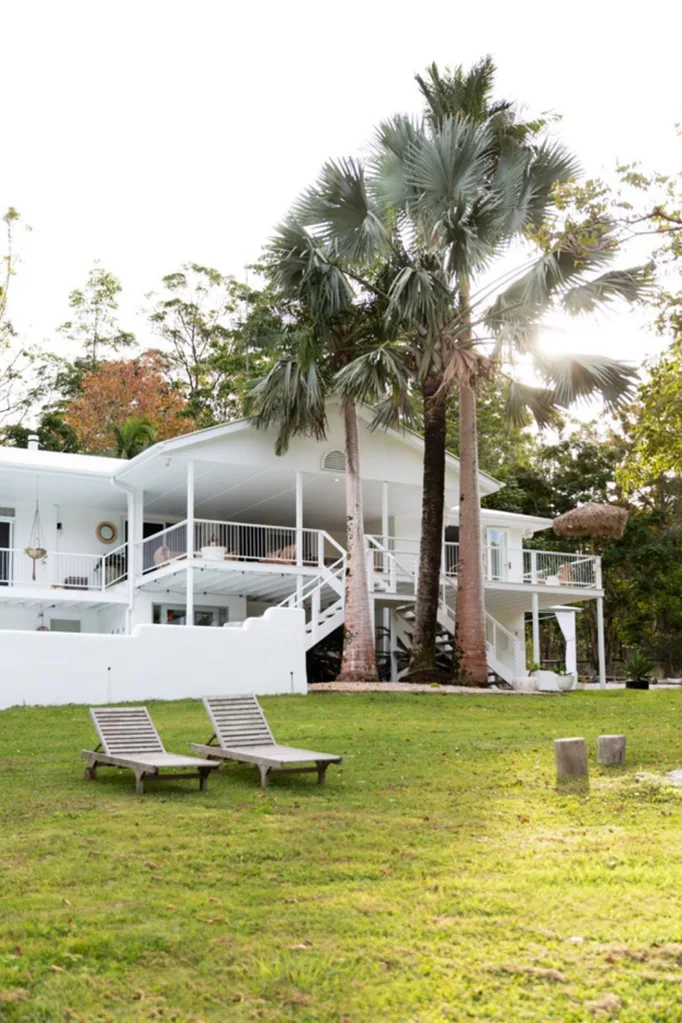
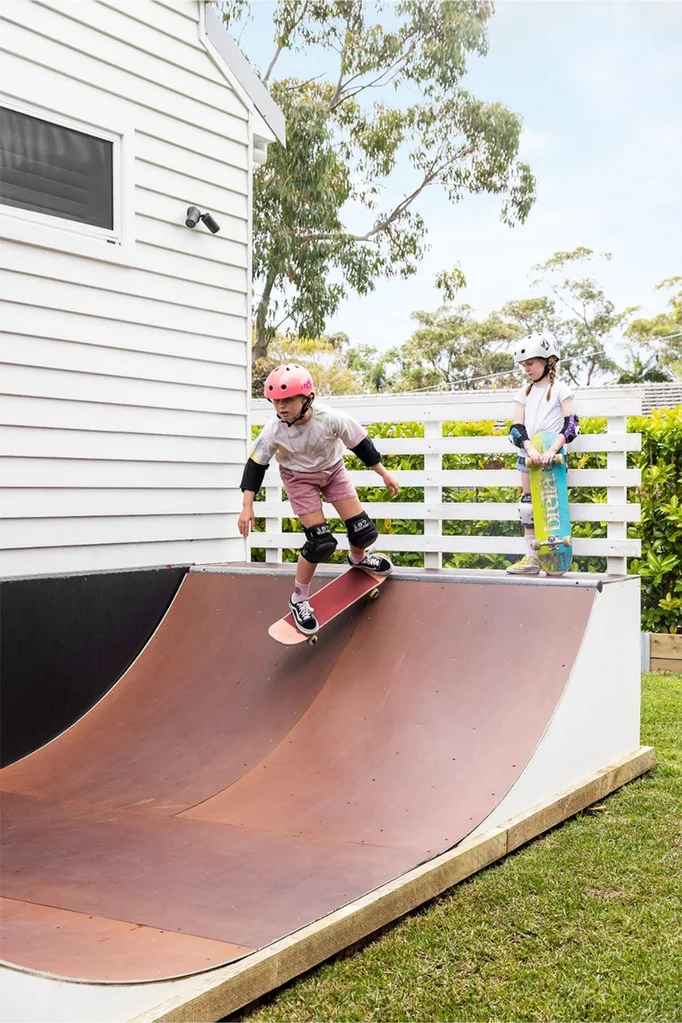
Green green grass: how to care for your backyard lawn
Lawn isn’t a set-and-forget thing (if only!). If you want luscious blades of glory, it’s important to mow grass regularly, since this actually promotes growth, says Karl. “Fertilise with a slow-release fertiliser, because this provides your lawn with all the nutrients it needs for a longer period of time.”
Water your lawn in the morning, advises Karl. “This will help protect against disease on the blades of grass and allow for greater absorption of water in the roots. If you water for longer periods of time but less frequently this will improve the drought tolerance of your lawn, too.”
It’s important to aerate your lawn, adds celeb landscaper and STIHL ambassador Charlie Albone. This encourages oxygen and water to penetrate the soil to feed the grass roots. “Going over your lawn with a garden fork is the simplest way to aerate your lawn,” says Charlie. “However, using a machine to core the lawn — a process of removing plugs of soil to help aerate the area — will produce the best long-term results. It’s a good idea to then top-dress with a sandy mix of soil, so the holes do not collapse in on themselves.”
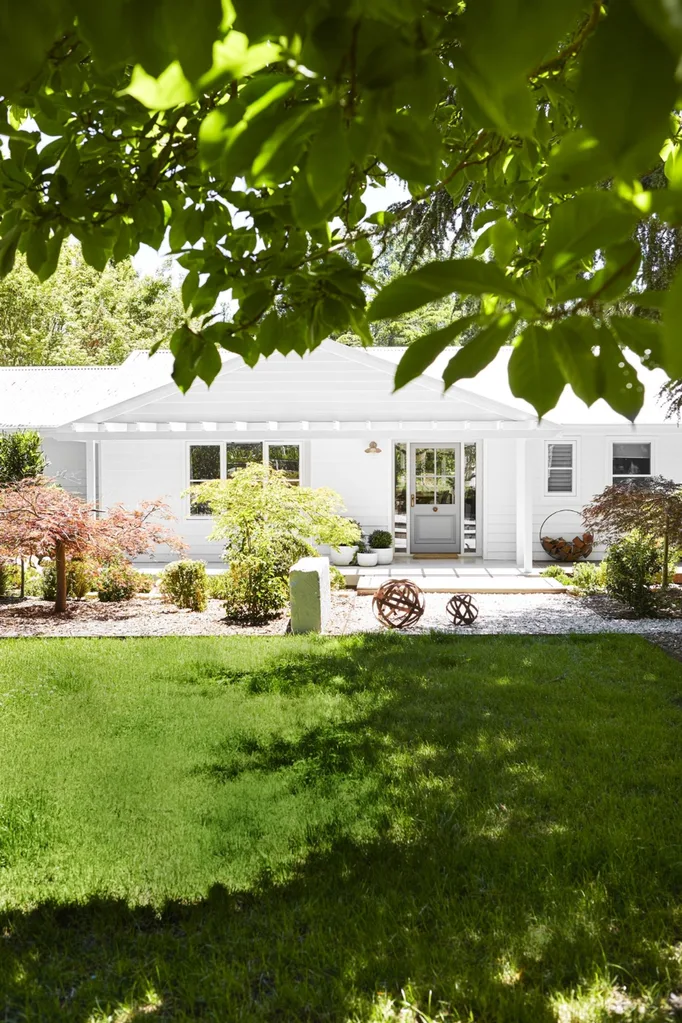
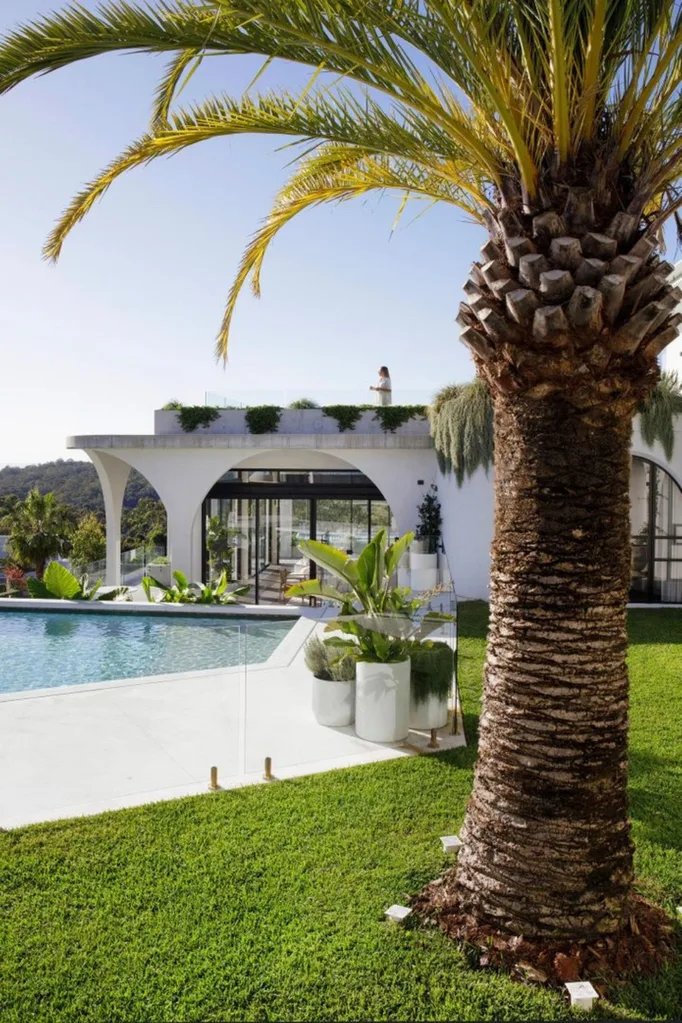
Give your concrete and paved surfaces a fresh coat of paint
Replacing concrete or other paved surfaces can be costly, but you can revive a tired-looking backyard using the new Dulux Concrete and Paving range. And be bold with colour, if that’s your jam.
Monochrome colours or beige often seem like the safe choice for the hard surfaces of your backyard or courtyard, but there’s a rainbow of options available. There’s no “wrong choice,” says Dulux colour expert, Andrea Lucena-Orr; it’s a matter of personal preference. “Dulux Concrete and Paving water-based top coats can be tinted to over 1000 colours, including to match heritage and Colorbond shades,” explains Andrea.
Follow Andrea’s tips for painting concrete:
- For pouring, pour a circular shape up to a 300mm diameter.
- For spreading, spread with a roller from the centre outwards, apply moderate pressure to the roller and push the coating outwards in multiple directions to evenly distribute.
- Work quickly and overlap the previously coated areas to ensure full coverage.
- Avoid regular patterns and knock down hard edges using the roller.
Refresh the decking in your backyard, courtyard or balcony
Re-sanding and re-oiling your deck is an important part of backyard maintenance, advises Mark West, Outdoor Living Buyer for Bunnings. It helps to protect the wood, giving it a longer lifespan, and makes your home exterior look new and improved. “The first signs that determine whether you need to re-sand or re-oil your deck include deterioration, patchiness or discolouration on the timber and its edges,” explains Mark.
“Oiling a deck can be knocked out in a day, but give yourself a weekend so you can prep the surface and allow generous drying time between coats. It’s important to properly remove surface contaminants like dirt, mould and oil, otherwise the timber will struggle to absorb a new coating — and will continue to discolour.”
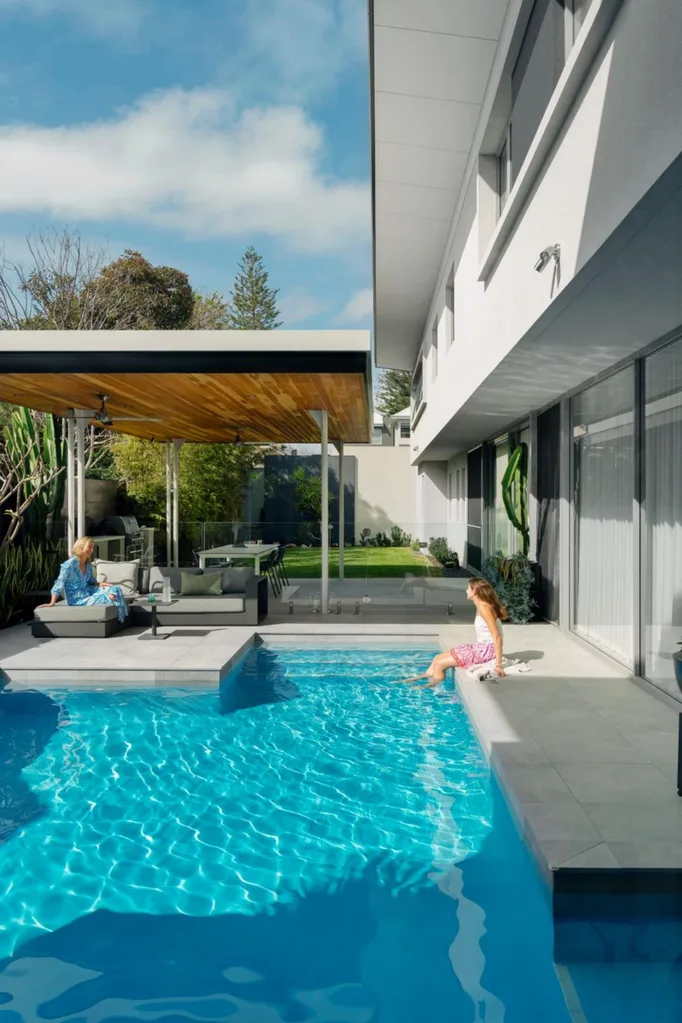
Elevate your backyard with the best outdoor furniture and decor
Once you know how you want to use your backyard and the landscaping is done, you can shop for the right outdoor furniture and accessories to make it feel just as homely as your interiors.
“Add colourful cushions for an easy and inexpensive update and invest in a good-quality patio umbrella for providing shade is both practical and beautiful,” advises Krista Huebner, co-founder of Basil Bangs. “For something different, an indoor-outdoor bean bag is a comfortable, stylish and super versatile option for endless poolside lounging, as well.”
Comfort is key, adds Krista, but so is practicality. “Ensure you’re getting the most durable outdoor fabrics,” she explains. “Some products are marketed as ‘outdoor’ but aren’t really. They need to be high-tensile, making them resistant to rips and tears. Look for water-repellent and UV-resistant materials, solution-dyed fabrics and a colourfastness rating of seven or more.”
Feeling crafty? Consider making your own portable outdoor lounger with these step-by-step instructions from Mark West:
- Using four equal square pieces of timber, drill cushion tie holes at the top of each piece of wood.
- Sand and then apply two coats of oil with a clean cloth.
- Installing metal hinges, secure each piece of wood together.
- Add a security hook to the top two pieces of wood and tie your outdoor cushions to the wood.
- Prop the lounger up using the security hook and you’re good to go.
For the full DIY instructions, visit Bunnings.
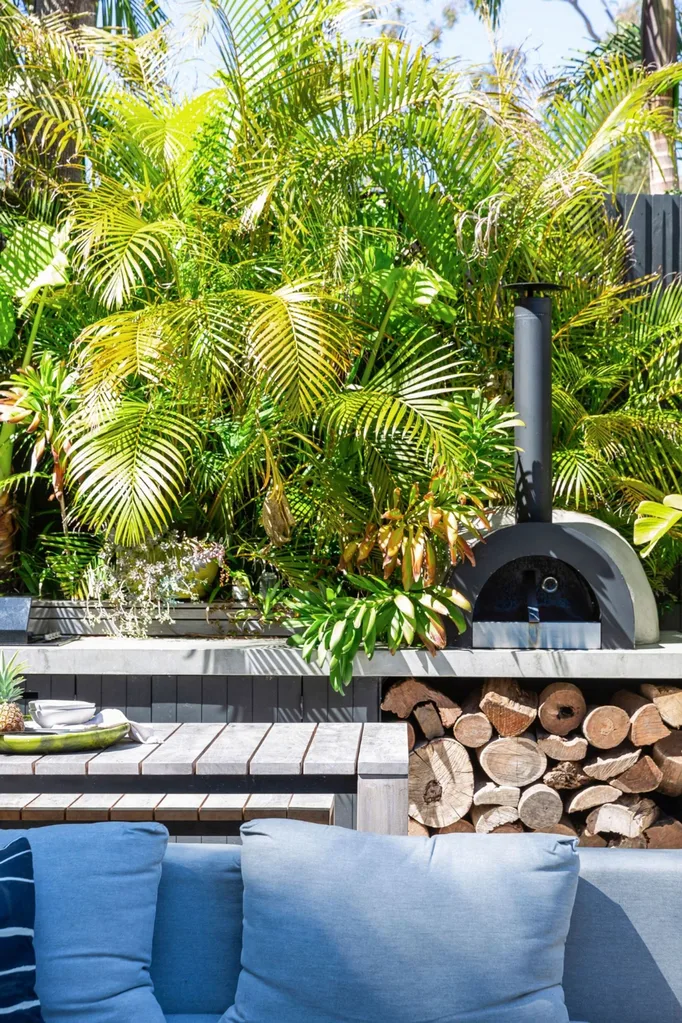

Get crazy-creative with the pathways in your backyard
The garden path can be a crucial landscaping feature, not just a way to get from A to B. Have fun with the avenues of your backyard. “Add interest by installing unique paving, stepping stones or pebbles,” says Mark. For a really on-trend look, crazy paving adds flair and texture to pathways, and it can also fill out a larger space — such as a courtyard. You can DIY, too (cue the weekend working bee).
“Select the pavers you’d like to feature in your backyard and, using a hammer, break them into smaller pieces; aim for a variation in sizes,” explains Mark. “Apply a coat of primer to the work area, and begin laying out your paving design. Once you’re happy with the result, use tile adhesive and grout to secure the path. Finish the job with some tile and grout sealer to protect the pavers from the elements.”
And make the most of paved garden areas and your driveway, if you have one. Leave the car on the street occasionally to increase your outdoor space.
